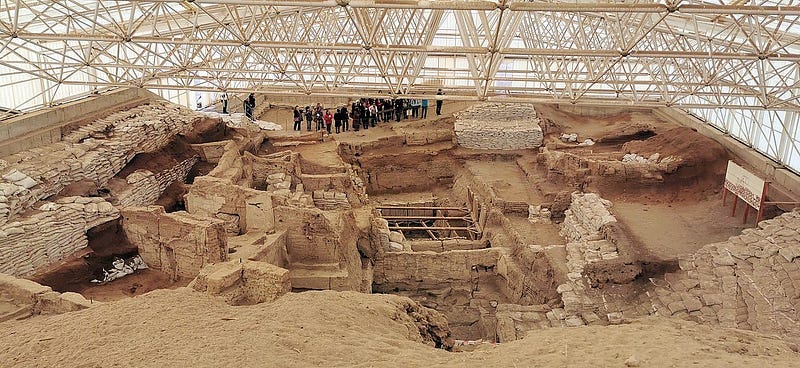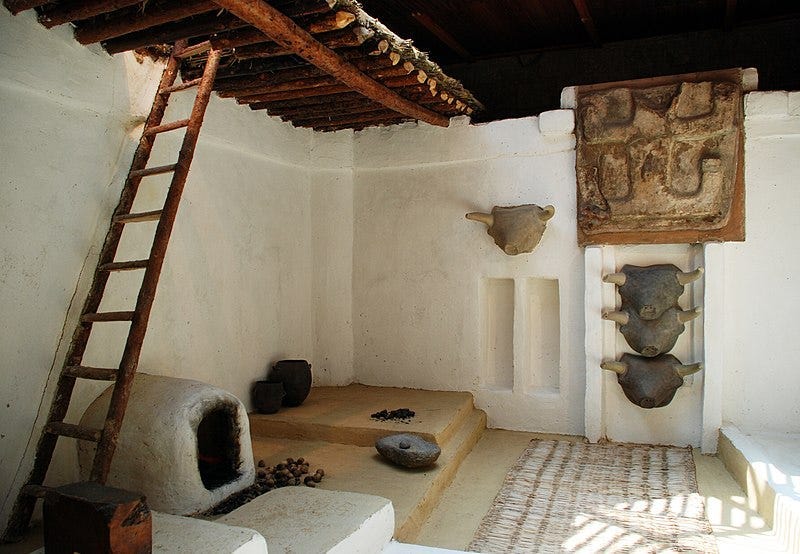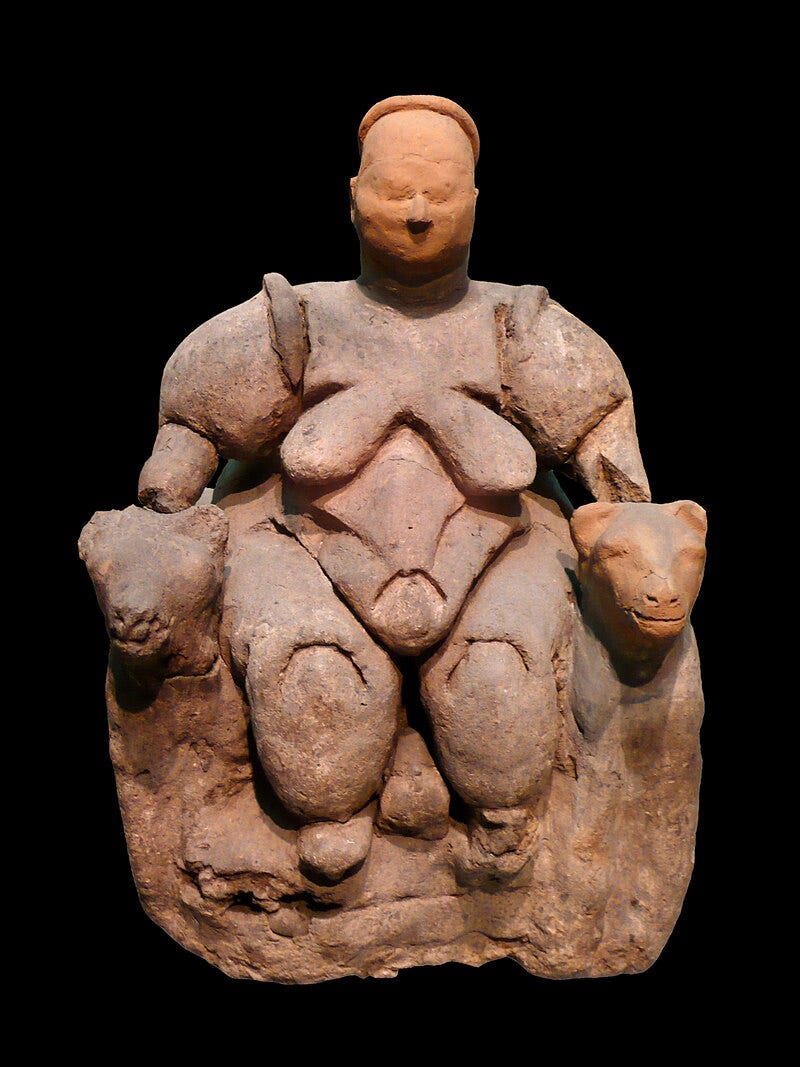The Death Cult At Çatalhöyük
Understanding why residents of a 9000-year-old proto-city lived with the dead

If you’ve lost a loved one, you probably have a photo of them somewhere in your home. Many also carry the deceased’s cremated remains in an urn. Pictures and urns evoke memories of those who have passed away.
Though we enjoy remembering special moments with those no longer with us, we prefer they rest far away from our living spaces. The dead are laid to rest in cemeteries or cremated. Around 9000 years ago, residents in Çatalhöyük, a proto-city in present-day Turkey, buried the dead beneath their houses. The deceased were family to them, and the modern boundaries separating the dead and the living didn’t exist.
During the Neolithic era (10,000 BC to 4500 BC), burying people beneath houses in the Near East was a common practice. We encounter intramural burials at other Neolithic sites such as Nevalı Çori, Aşıklı Höyük, and Jericho.
But the scale of burials seen at Çatalhöyük is unparalleled, with some houses containing sixty graves. We can envision it as a prehistoric town on top of a cemetery.
Excavations at Çatalhöyük show 18 layers of continuous habitation from 7100 BC to 5950 BC. Each level reveals that the people preserved their ancestors’ traditions.
Three decades of extensive excavations have helped us understand how people perceived death 9,000 years ago. Instead of discussing the artifacts found at Çatalhöyük, this story will focus on burial customs. We will learn about the different types of burials, funerary practices, and the bond between the living and the dead.
But, before we examine the burials, let’s take a quick tour of this densely packed Neolithic settlement, humanity’s first foray into urban life.
Reminder: By choosing a paid membership (just $5 a month or $50 annually), you're helping amplify voices that history books too often overlook. Your support means these stories get the attention they deserve.
You’ll gain access to tons of members-only content👇
Full-length deep dives into untold stories, like this one: no paywalls, no cuts.
The entire archive of extraordinary tales from the Ice Age to the Fall of the Mongol Empire, the hottest archaeological finds, and the appetizing history of food.
Early access to special editions, be the first to dive in.
Join lively discussions in members-only posts and subscriber chats.
Çatalhöyük: A bird’s eye view

On a chilly afternoon in November 1958, British archaeologist James Mellaart spotted a mound 450 m long covering 32 acres in the Anatolian Plateau near Konya. Initial excavations between 1961 and 1966 revealed rectangular mud-brick houses with painted walls, bulls’ heads, burials beneath homes, and female figurines. Other artifacts included obsidian mirrors and daggers with elegant bone handles.
The site was called Çatalhöyük.
Mellaart had discovered a massive Neolithic community, the world’s largest “town” in the 8th millennium BC, with a peak population of approximately 8,000. Archaeologists hesitate to classify Çatalhöyük as a “town” or a “city” because it lacked a social structure and prominent monuments. However, many elements of urbanization were visible.
After 1966, there were no further excavations at Çatalhöyük until Ian Hodder, one of Mellaart’s students at the University of Cambridge, began digging the site in 1993. Hodder, who led the Çatalhöyük Research Project until 2018, contributed significantly to our understanding of this Neolithic settlement.
At Çatalhöyük, the houses were crammed together in a labyrinth because no streets connected them. One had to use the roof and a ladder to enter and exit a dwelling. Each house was occupied for eighty years, after which they were deliberately collapsed, and a new home was built over them.
The dwellings were similar in design. Each house had two rooms. The kitchen, which was close to the entrance, had a hearth and an oven. The kitchen was part of the main room, with a raised platform for domestic tasks. Beneath this platform were the burial chambers, but as we’ll see later, teenagers and children were buried in the store room. A small storage space beside the main room housed grains and animal hides.
The inhabitants of Çatalhöyük were early farmers who had just started domesticating plants and animals. Despite abundant hunting depictions in the dwellings, the inhabitants relied on sheep and goats for meat.
The walls of the central area of the house feature enormous sculpted bullheads with horns pointing at the viewer. The walls are plastered and depict scenes of hunting stags, aurochs, and wild boars. They also have murals featuring giant vultures flying over headless humans, a theme we encounter at Göbekli Tepe.

One of the primary features of Çatalhöyük is the abundance of remarkable female figurines, which Mellaart and the initial excavators imagined to be part of a fertility cult.
The most famous among them is the Seated Woman of Çatalhöyük.
What does the idol represent?
Keep reading with a 7-day free trial
Subscribe to Forgotten Footprints to keep reading this post and get 7 days of free access to the full post archives.



